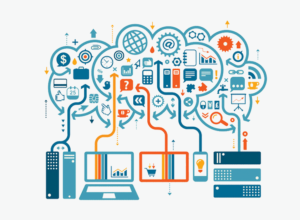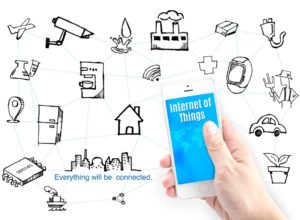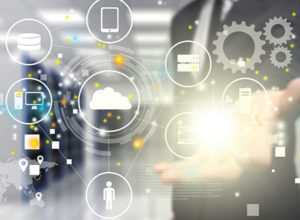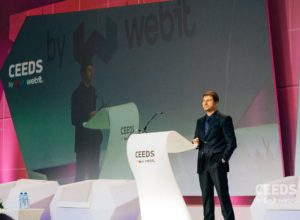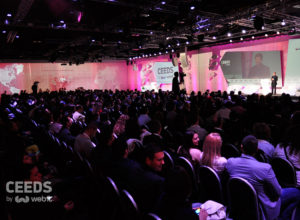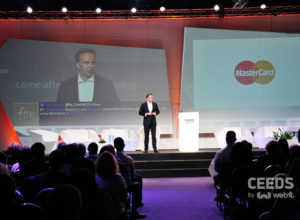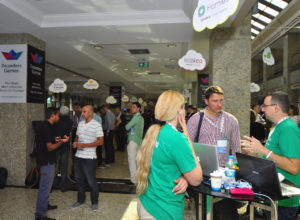Stylianos Mamagkakis: Forty percent of the people use Samsung devices, but...
"The three main components that have to be accounted for are computation, storage and displays and each of them has different strong and weak sides, different trade-offs that have to be made. The main goal of the company is to find the right balance between these and make some big decisions based on that", shared at CEE Digital Summit by Webit Stylianos Mamagkakis - Manager Strategic BD, Samsung Semiconductor Europe.Starting with wearables, their main components are a connectivity component, display, computation processor and a security component. All of these need to be very light, small, powerful and efficient. The processors used in smart watches are bio processors, which are very small and can be embedded in the smallest of things, like necklaces for example. Depending on what end-user scenarios we have there are many different ways the manufacturer can go. For example, when it comes to watches, appearance and fashion are the leading forces when it comes to design. the devices also needs to be thin, yet reliable and secure. These needs raise some question when we think about storing data – on one hand we can store the data in a data center, which means that the device needs to stay connected. On the other hand the data can be stored on the device, but in that case the consumer might decide not to share it with anyone, making it harder for manufactures to monitor the devices they sell. Another area where smart technology is needed are connected cars. The car can be looked as a device that collects and displays data in the same time. The backstage of all enabled devices is the cloud. Depending on the scenario we choose, we might want to store and process all our data on the cloud, where we have more security and more processing power. In data centers, as well as devices you have different components that play leading roles, like processor and memory. Having faster CPUs and hard-drive might cost more but will provide a better customer experience. As usual, we need to find the correct balance when we talk about storing and processing data in the cloud. In the recent years, solid state drives have proven to be a much better choice for storing data. New technologies are coming in, like VNAND, that will make storing data even faster and more power-efficient. It is not just important for manufacturers to understand how components work – it is also important that designers understand the limitations and work around them, trying to provide the best user experience with the resources provided. understanding all the trade-offs in respect of size, speed and power-consumption will let companies to make the right choices when it comes to providing the best user experiences. If you'd like to hear the whole speech of Stylianos Mamagkakis - Manager Strategic BD, Samsung Semiconductor Europe, please click HERE.
Bernd Heinrichs: Digitalization is global, it neglects borders
"Digitalization is global, it neglects borders. It generates opportunities, but it can also create some risks. Even though CISCO has 50bn in cash they might disappear from the market completely in just 5 years if they don’t make the right decisions and restructure. Innovation has to be driven everywhere, not just in the Silicon Valley, said Bernd Heinrichs, Managing Director IoT EMEAR Cisco in his speech at CEE Digital Summit by Webit".But first what is the Internet of Things and what is so important about it? The Internet of Things is a system, where everything is connected and everything is constantly feeding data to the cloud – starting from your smartphone and going everywhere else, like toys, microwaves, cars etc. The things themselves are not important, the data they produce is. And with that comes the question that we still haven’t answer – who owns the data? Is it the owner of the machine, is it the manufacturer, or the retailer? We have to make sure that the data doesn’t get in the wrong hands, that it is handled properly and is well secured. With the size of the network constantly growing, security will become a bigger and bigger issue. We currently have around 15bn connected things and this is just 1% of all the things we can connect. When talking about the Internet of Things we certainly can’t have a full discussion without mentioning some of the biggest problems we are facing. Challenges like limited bandwidth, latency and network unreliability have to be solved efficiently before we can move on to implementing the Internet of Things everywhere, in every industry.
Uwa Kubah: From Internet of Things to Internet of People
Digital revolution – transformation of the business
Plamen Russev: "You are the optimists who are changing the world"
Steps toward digital evolution
"The potential users in Europe are about 500 million- far more than the 350 millionth US market, but that each Member-State is subject to its own regulations is a real challenge in front of the digital single market”, said Andrus Ansip during his speech at the opening of CEEDS. "If we want Europe to take its role is extremely important to make the necessary changes in education and the legal system, health care and transportation, but mostly to begin to encourage entrepreneurship, because some of the most successful companies in recent years are those who founded the business in principles of the sharing economy. " Although this doesn’t fit the current legal system, their current market value can compete the world's largest banks with centuries of tradition" - was the thesis that Plamen Rusev defended during the opening.CEOs, founders, CTOs, CIOs and top managers shared their experiences during the CEEDS by Webit lecture stream and shared part of the marketing trends that will influence the market in the next few years:
- The future of media and marketing market will be ruled by the three C - computers, cloud technology and connectivity;
- Although the content, technology and statistical data are already bound together, the business gradually passes from content-oriented to ecosystem-oriented communication;
- Hyper-segmentation and the ability to manage "transparent" data are the main skills that marketing experts should learn and apply;
- Email communication retained its leading positions on user engagement and effectiveness.
"Big data turn marketing into a science - we no longer talk about emotions or stories, we discuss "the new marketing" as a science that doesn't educate but analyze. " said from the stage Igor Beuker- Pro Speaker, Author & Awakener.On the tech scene were discussed the technology in the field of aerospace and the evolution of cooperation between human and robot in innovation of astronaut suits and how they interact with the person who wears them. There was spoken also about the evolution in online education and how it affects traditional pedagogy, making it even more effective, but also how important is the role of the professional and qualified training.
"Education is a whole industry. By placing the right objectives and considering its proper value every business should be influenced and affected"said the founder of the online education platform Eliademy - Sotiris Makrigyanis.CEEDS'15 by Webit ended with a panel discussion that illustrates the huge advantage that Bulgaria offers the investors and the opportunities for CEE entrepreneurial ecosystem to develop.
Webit CEEDS 2015, Marketing and Innovations Summit
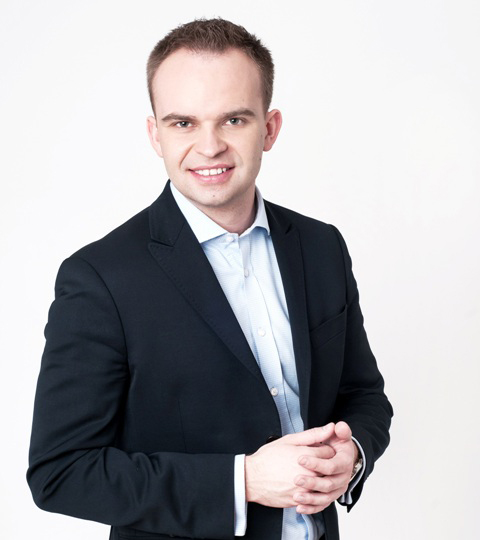 Artur Turemka, General Manager, Balkans, MasterCard
Artur Turemka, General Manager, Balkans, MasterCardAccording to the MasterIndex research from 2014 the percentage of Bulgarian citizens who pay online has increased by 17% in 2014 – from 37% to 54%. No wonder then that Central Eastern Europe is recognized as being leader in contactless across the globe and Bulgarian market is ready for new solutions like mobile payments.
At this year’s CEEDS’15 by Webit Artur Turemka, General Manager, Balkans, MasterCard, will share the latest in online and mobile payments from the global and local experience of the company at the Mobile and Commerce Stream.
Ас a pioneer of mobile commerce innovation for years MasterCardvision is to create great payment experiences for everyone across all channels and all devices.So are looking forward to hearing about the company’s latest pursuits to transform any connected device a consumer may have into a commerce device which enables you to make and receive payments. Be sure not miss Artur Turemka on the first day of CEEDS’15 – April 21st and learn about innovation across the region –from examples of adoption of digital wallets to the first service in Europe that allows fast and secure payments for taxi passengers that has been introduced in Bulgaria!
In the midst of the digital revolution thinking differently, designing products differently and innovating faster than ever before seems to be the winning credo and CEEDS’15 by Webit – the biggest Digital & Tech gathering for Central & Eastern Europe is the place to be if you want to be among the winners of tomorrow’s transformation.
And if you are up to some exciting adventures make sure you visit MasterCard’s local Facebook page during Webit conference as you will have the chance to get a priceless surprise!

